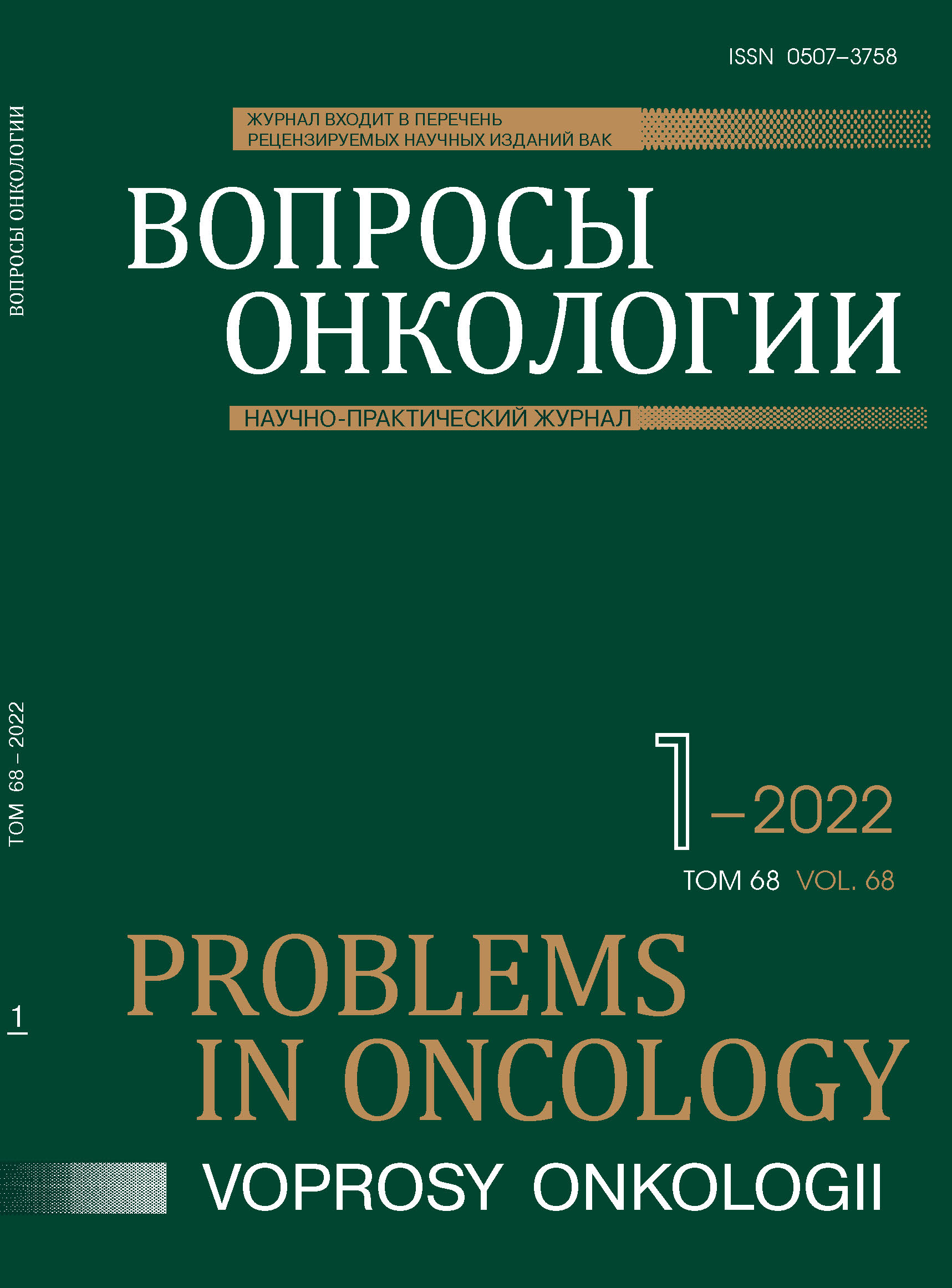Abstract
A study was carried out to identify the spectrum and frequency of pathogenic changes in the BRCA1 and BRCA2 genes in tumor tissue preparations of 70 women with triple negative breast cancer (TNBC) and 50 women with serous type of ovarian malignant neoplasms (ON) from the Republic of Bashkortostan using a new generation sequencing technology (NGS). Thus, 27 pathogenic variants were identified in the BRCA1/2 genes were identified (14 in the BRCA1 gene and 9 in the BRCA2 gene) in 38.0% of women with ON and 41.4% of patients with TNBC. Mutations c.181T> G (rs886040898) and c.5266dupC (rs80357906) in the BRCA1 gene were found in women with both TNBC and ON, other pathogenic changes did not intersect. In the BRCA1 gene, 7 pathogenic and 1 probably pathogenic variant were identified in women with breast cancer, the most common mutation was c.5266dupC, which was found in 17.14% of women. The second most frequent mutation c.181T> G- was found in 4.29% of women with TNBC, the third c.3700_3704del - 2.86%. Mutations c.1918C> T, c.3779T> G, c.5453A> G, c.68_69delAG were found in isolated cases. The c.5266dupC mutation in the BRCA1 gene was also the most frequent in patients with ON (10%). The c.4035delA mutation was found in two patients, the remaining 7 mutations were found in isolated cases. In the BRCA2 gene, 5 pathogenic and 2 probable pathogenic variants were identified in patients with TNBC, as well as 4 pathogenic and 2 probable pathogenic variants in women with ON, each mutation was detected in only one woman and is a unique variant not found in other patients. The results obtained demonstrate the high efficiency of mass parallel sequencing for searching for mutations in targeted genes in tumor tissue.
References
Balmana J, Diez O, Rubio IT, Cardoso F. BRCA in breast cancer: ESMO Clinical Practice Guidelines // Ann Oncol. 2011;22(Suppl. 6):vi31–vi34. doi:10.1093/annonc/mdr373
Любченко Л.Н., Батенева Е.И., Абрамов И.С. и др. Наследственный рак молочной железы и яичников // Злокачественные опухоли. 2013;2:53–61. doi:1100.18027/2224-5057-2013-2-53-61
Rouleau E, Lefol C, Moncoutier V et al. A missense variant within BRCA1 exon 23 causing exon skipping // Cancer Genet Cytogenet. 2010;202(2):144–146. doi:10.1016/j.cancergencyto.2010.07.122
Konecny M, Kosova K, Tilandyova P et al. The results of multigene panel sequencing in Slovak HBOC families // Neoplasma. 2021;68(3):652–664. doi:10.4149/neo_2021_201204N1307
Бермишева М.А., Богданова Н.В., Гилязова И.Р. и др. Этнические особенности формирования генетической предрасположенности к развитию рака молочной железы // Генетика. 2018;54(2):233–242. doi:10.7868/S0016675818020042
Bogdanova NV, Antonenkova NN, Rogov YI et al. High frequency and allele-specific differences of BRCA1 founder mutations in breast cancer and ovarian cancer patients from Belarus // Clin. Genet. 2010;78:364–372. doi:10.1111/j.1399-0004.2010.01473.x
Hamel N, Feng B-J, Foretova L et al. On the origin and diffusion of BRCA1 c.5266dupC in European populations // Eur. J. Hum. Genet. 2011;19:300–306. doi:10.1038/ejhg.2010.203
Sokolenko AP, Mitiushkina NV, Buslov KG et al. High frequency of BRCA1 5382insC mutation in Russian breast cancer patients // Eur. J. Cancer. 2006;42:1380–1384. doi:10.1016/j.ejca.2006.01.050
Laitman Y, Friebel TM, Yannoukakos D et al. The spectrum of BRCA1 and BRCA2 pathogenic sequence variants in Middle Eastern, North African, and South European countries // Hum Mutat. 2019;40(11):e1–e23. doi:10.1002/humu.23842
Menkiszak J, Gronwald J, Górski B et al. Hereditary ovarian cancer in Poland // Int J Cancer. 2003;106:942–945. doi:org/10.1002/ijc.11338
Plakhins G, Irmejs A, Gardovskis A et al. Genotype-phenotype correlations among BRCA1 4153delA and 5382insC mutation carriers from Latvia // BMC Med Genet. 2011;12:147–155. doi:10.17650/1994-4098-2014-0-2-8-11
Бровкина О.И., Гордиев М. Гены системы репарации: популяционные различия наследственных типов рака яичников и молочной железы, выявляемые методом секвенирования нового поколения // Опухоли женской репродуктивной системы. 2017;13(2):61–67. doi:10.17650/1994-4098-2017-13-2-61-67

This work is licensed under a Creative Commons Attribution-NonCommercial-NoDerivatives 4.0 International License.
© АННМО «Вопросы онкологии», Copyright (c) 2021
